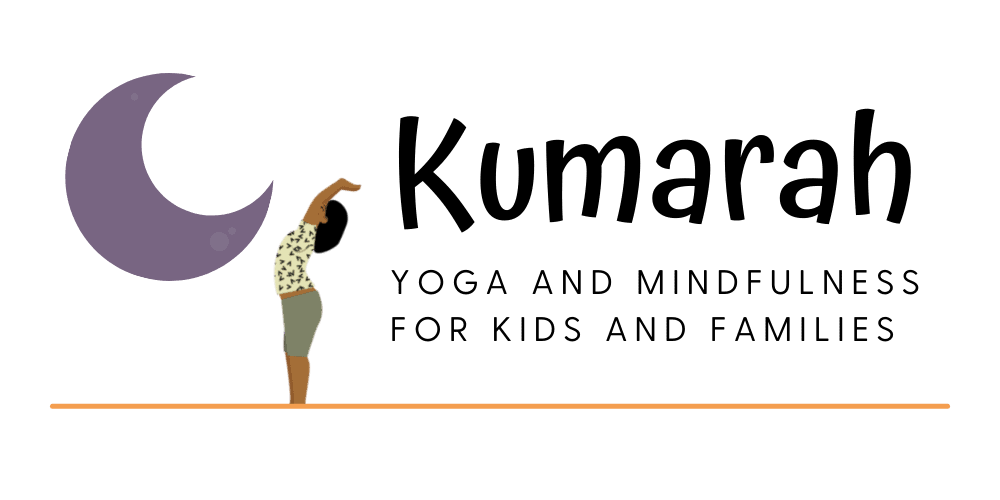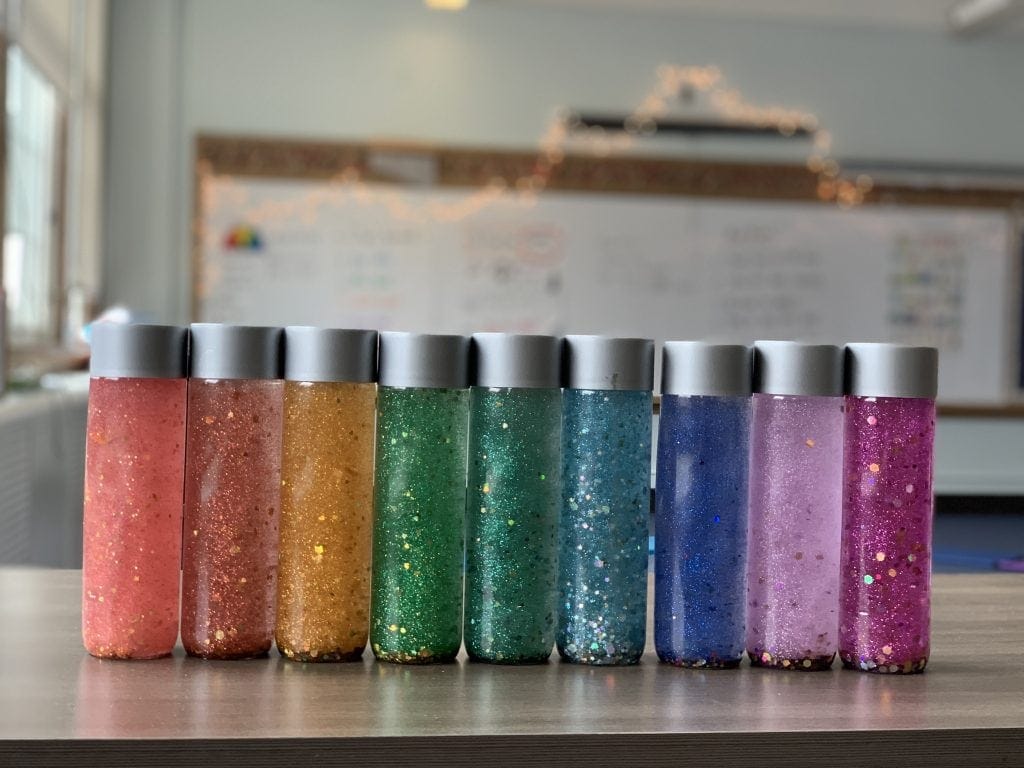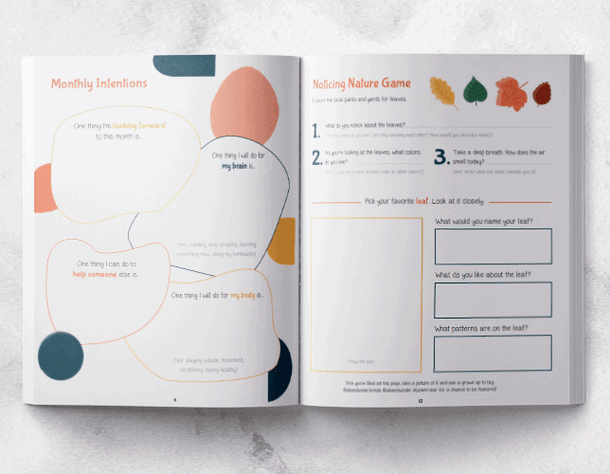Anxiety and stress gets to everyone at one point or another, even kids, and they often lack the techniques to manage them mindfully.
The past few years have been especially stressful for a plethora of reasons.
Children are often even more susceptible to anxiety. More and more pressure gets put on them from all sides-school, extracurriculars, home life, etc.
What can we do to help our kids deal with all this added stress?
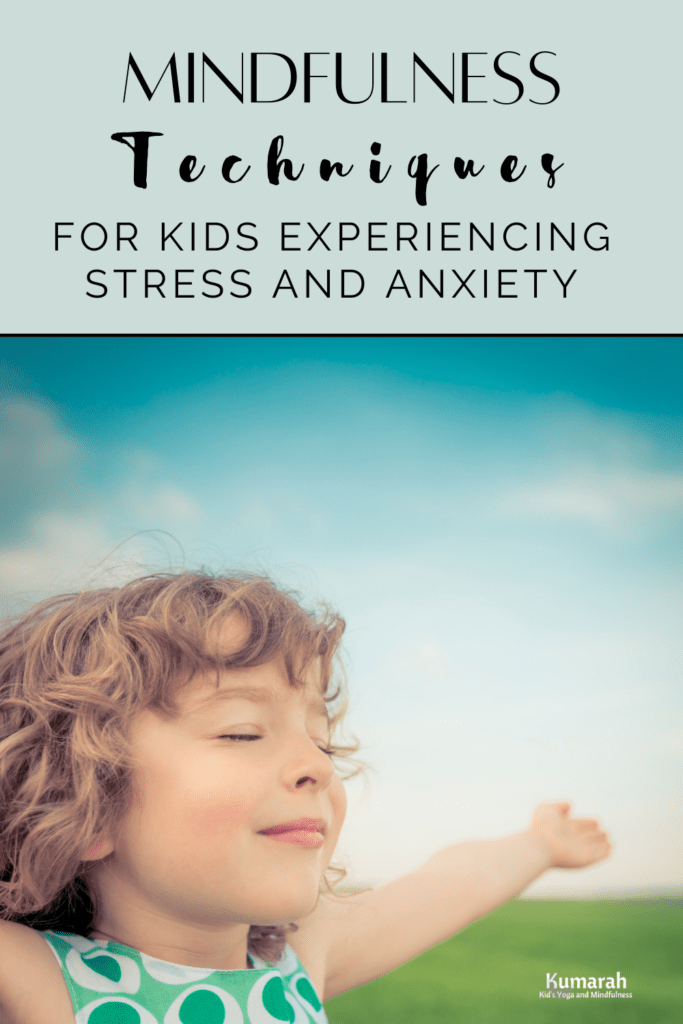
How to identify signs of anxiety in kids
Being able to identify anxiety and stress in kids is the first step to providing help for them. Some signs of anxiety in children are:
- Difficulty concentrating
- Trouble sleeping
- Using the bathroom often
- Irritability and anger
- Feeling sick
- Not eating properly
- Tendency to cling
- Feelings of worry or crying often
Please note, some of these issues may be best address by your child’s physician; always consult a doctor when you are worried about your child’s health.
Now, it is natural to want to fix things for your children. But sometimes, the best way to help them overcome anxiety or stress is to teach them how to manage it.
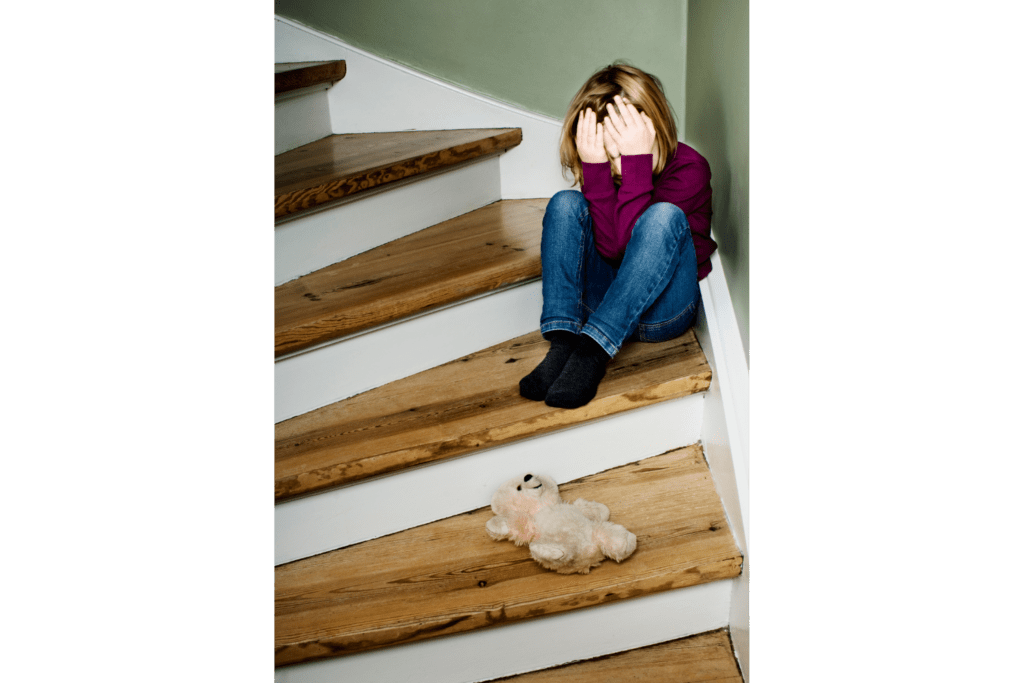
Why is learning how to manage stress and anxiety important?
As much as we want to, we cannot protect kids from everything that might make them upset.
By teaching them how to recognize these big emotions and ways to avoid being overwhelmed by them, we can show kids healthy ways to deal with stress and anxiety.
This will guide them to becoming emotionally healthy and responsible people
We face an abundance of frustrating and worrisome situations on a daily basis. Stress surrounds us and kids are unfortunately not exempt.
It is important to learn how to manage these difficulties so we are not guided by our fears and anxieties.
Practicing mindfulness is a great technique to help kids who experience anxiety and stress.
What is mindfulness?
People have practiced mindfulness in different forms for thousands of years. So what is mindfulness exactly?
Mindfulness is a form of non-judgemental meditation where you intently focus on what you are thinking and feeling. The meditation form is practiced by many cultures and religions, including Buddhism, Hinduism, and Judaism.
There are many ways to apply mindfulness to everyday life. All of it involves is practicing patience, self-awareness, and empathy.
How can mindfulness of emotions help kids with stress and anxiety?
Emotions can be overpowering, especially for kids. They are just beginning to experience the world and are being confronted with the wide expanse of their feelings.
Kids get to learn the depth of their emotions in a world designed to overwhelm them. It is full of sounds, smells, and sights that children are experiencing for the very first time.
They don’t yet have a threshold for stress, so it seems like what we perceive as the ‘small things’ are actually huge for kids. (Even adults have some trouble with this!)
Mindfulness can help soothe anxiety and stress in kids by helping to
- Refocus on the present
- Relax the mind and body
- Rewire the brain to promote wellness
- Regulate emotions
- Become aware of the mind-body connection
- Encourage confidence and compassion
- Inspire empathy
Learning methods of mindfulness can help children in many ways. Not only does it help manage anxiety and stress, but it also is key to regulating emotions, improves concentration, and boosts self-esteem.
Mindfulness aids in creating a safe space for kids (and adults) to recharge, reset, and refocus.
So how do you help kiddos calm down before their emotions become too overwhelming?
There are many tips and tricks to do this that all involve mindfulness.
You can incorporate mindfulness into things you already do during your day.
From walking and listening to music to simply taking a minute to breathe-mindfulness can (and should) be a part of your daily routine to pause and calm down the stress hormones that often overwhelm us.
Here are some easy and fun techniques to practice mindfulness with kids who experience anxiety.
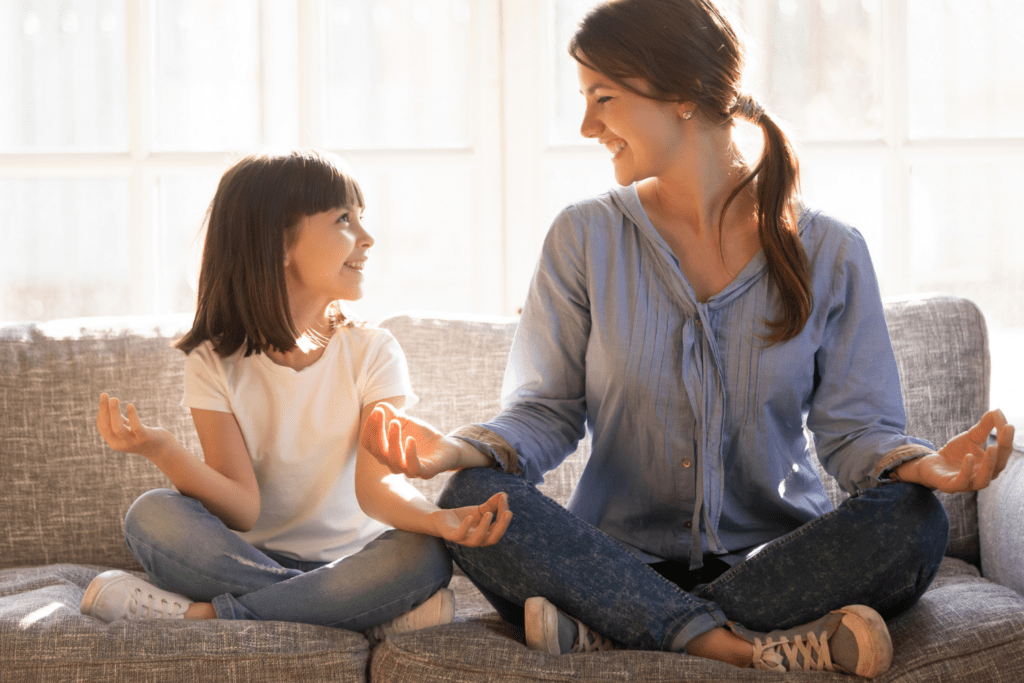
Fidget Toys for Anxious Kids
These sensory toys are sure to be a hit with your kiddos. You have probably seen these through the years as they have grown in popularity.
I remember first seeing the fidget spinner burst into widespread use, especially with kids in school. We have always had fidget toys but before they became the latest craze, you might have clicked pens or popped gum instead.
What are fidget toys and why do they help ease anxiety?
Simply put, they are toys designed for kids to regulate emotions and help with focus, attention, and listening while also easing anxiety.
It’s something small they can hold in their hand to keep their fingers busy while their mind is working.
Having a fidget toy is a valuable tool used to provide a much-needed mental break for kids. Additionally, they can increase concentration and productivity.
Try these excellent and highly recommended fidget toys for kids (and adults)!
Tangle Creations Therapy Tangle
- Good for younger kids
- Textured and easy to clean

- Reusable and washable
- Good for all ages
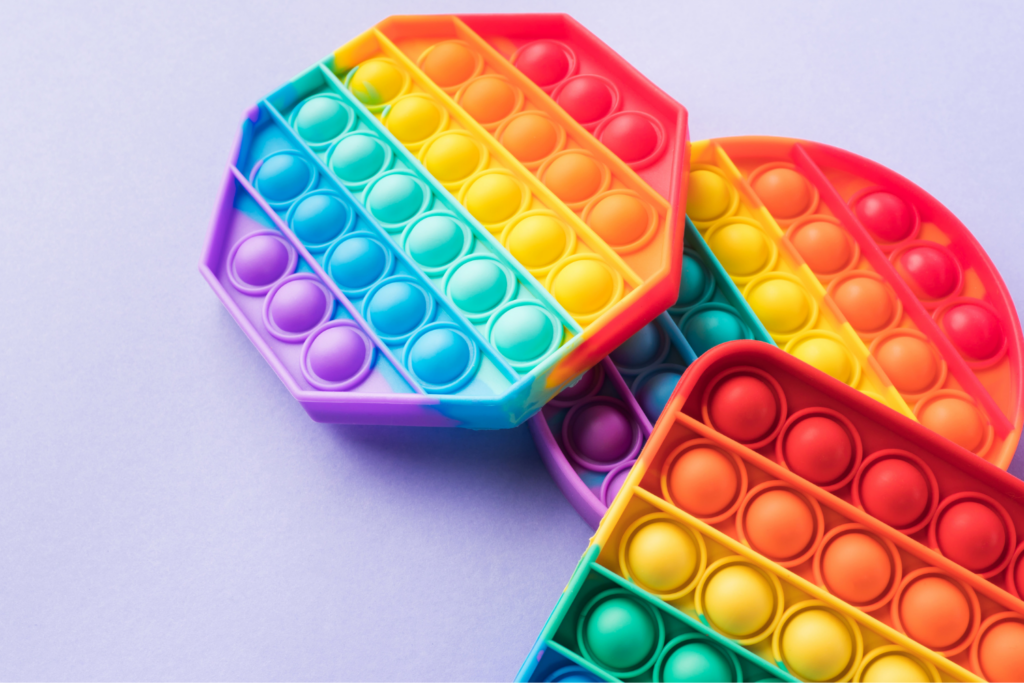
- Colorful metal rings good for calming
- May present choking hazard in younger kids

- Great for all ages
- Easy to have on desks

- Small and durable
- Good for creating shapes

Sensory toys are a great resource for kids needing brain breaks. Though they were originally designed for people with ADHD and autism, these are also excellent for managing anxiety and stress!
If you do have children with ADHD and autism, here are the best sensory toys for kids with autism.
There are countless different versions of these toys, so it is easy to find something that will work for you or your kiddos.
Music for Mindfulness
Music has been a wonderful source for mindfulness for ages. Listening to calming classical or other genres of music can be great for releasing stress.
Combined with dancing or playing an instrument, music is proven to help you stay focused and be creative.
Look no further for excellent mindfulness music:
- Relaxation Music for Children & Adult Meditation by Fablefy the Whole Child
- Soothing Meditation Music by Mindful Kids
- Positive Background Music for Kids by OCB Relax Music
- 60 Minutes Happy Music for Playtime by Magic Footprints
Crafts for Anxiety
For days with a little more time, crafting is an excellent way to practice mindfulness.
Very often, getting their hands moving and mind focused on something like a craft can help decrease anxiety and provide a much needed brain break.
I personally love to craft! Things like painting, creating a zen garden or glitter bottle, or knitting can take my mind off stress for a time.
Check out my compilation of great mindful crafts here!
Mantras and Affirmations
Another useful method for easing anxiety is mantra meditation. Mantras have been used for hundreds of years all over the world.
You might recognize the popular “Ohm” sound that many people use during yoga or meditation sessions. Anything can be a mantra as long as it has meaning to you and repetition.
Positive affirmations are another version of mantras.
There is a huge list of positive affirmations for kids here.
By using affirmations, kids learn how to build self-esteem and empowerment within themselves that stays throughout their lives.
As you breathe, think or say your mantras or affirmations. Be kind to yourself 🙂
Here are some examples of mantras for kids
- I am capable and confident
- My thoughts and feelings are important
- I work hard to achieve my goals
- Its ok to take a break and ask for help
- I am strong, inside and out
Journaling is also a productive way of practicing mindfulness using affirmation prompts.
My favorite journal for kids to learn mindfulness and positive affirmations is from Silk and Sonder here.
Yoga
Obviously, one of my favorite ways to practice mindfulness with kids is by doing yoga.
Using yoga routines and poses is a great way to help kids struggling with anxiety and stress. Not only does yoga regulate the mind and body’s stress response system, it also helps improve mood and self-esteem.
Other ways yoga helps reduce anxiety and stress for kids:
- Learn how to control breathing
- Improves balance
- Builds confidence
- Reduces blood pressure
- Improves sleep
- Increases focus and attention spans
Yoga is a wonderful way to get kids engaged and having fun. Particularly anxious kiddos can benefit even more from regular practice because it builds routine and stability (though you can do it at any time).
Giving kids brain and movement breaks through yoga is an important element in reducing anxiety through mindfulness.
I have many lessons and articles talking about the benefits of yoga.
You can find routines and poses specifically for managing anxiety and stress here, themed lessons here, and other mindfulness tips here.
-
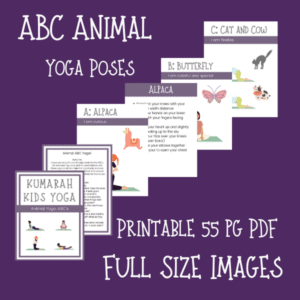 ABC Kids Yoga Pose Cards$9.00
ABC Kids Yoga Pose Cards$9.00 -
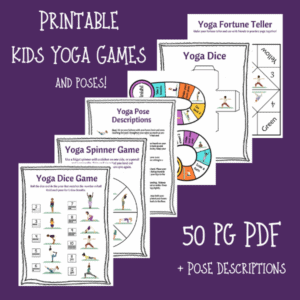 Yoga Games for Kids Bundle$9.00
Yoga Games for Kids Bundle$9.00
Meditation
One of the most essential aspects of mindfulness is meditation.
Since mindfulness is a form of meditation, it is important that we know how to meditate and breathe properly.
Meditation is the most effective method of easing anxiety because it requires kids to sit still (depending on the method), focus, and be in the moment. Once you make it part of your daily routine, you’ll notice the difference when you miss a day!
You can introduce meditation to your kiddos through a few different ways. Guided meditations apps like Headspace, Calm, and Smiling Mind are wonderful for visualization and easy for kids to use.
Another way to meditate is through scripted meditations. Much like guided meditations, this method uses a script to guide kids through their big emotions.
You can make your own script or find some here. Walking and candle meditation are also very useful, but I prefer the more traditional methods.
Here’s a list of some excellent mindfulness videos for kids to watch to start learning about mindfulness meditation.
Starting a meditation routine can be intimidating, but it is actually very easy. The most important aspect of it is your breathing.
Knowing how to breathe is part of every meditation because it lowers blood pressure and heart rates and calms the mind through repetition. It gets kids to focus and be in the present, which eases anxiety and stress.
How do you breathe properly? It takes focus and attention and a little quiet space.
- Find a comfortable, quiet place to sit. You can also practice by standing or laying down.
- Check that your posture is straight and you are comfortable before closing your eyes.
- Inhale deeply for seven seconds through your nose. Notice how your lungs grow with each breath. Think about your intentions.
- Hold for four seconds.
- Exhale through your mouth for five seconds. Notice how the breath leaves your lungs. How do you feel? How is this different from inhaling?
- Repeat
With each meditation, you can switch the amount of time you inhale, hold, and exhale. As you do this, think about your feelings, the sensations around you, and your intentions for this. Be purposeful with each breath.
Just notice each breath, and you will be practicing mindful breathing.
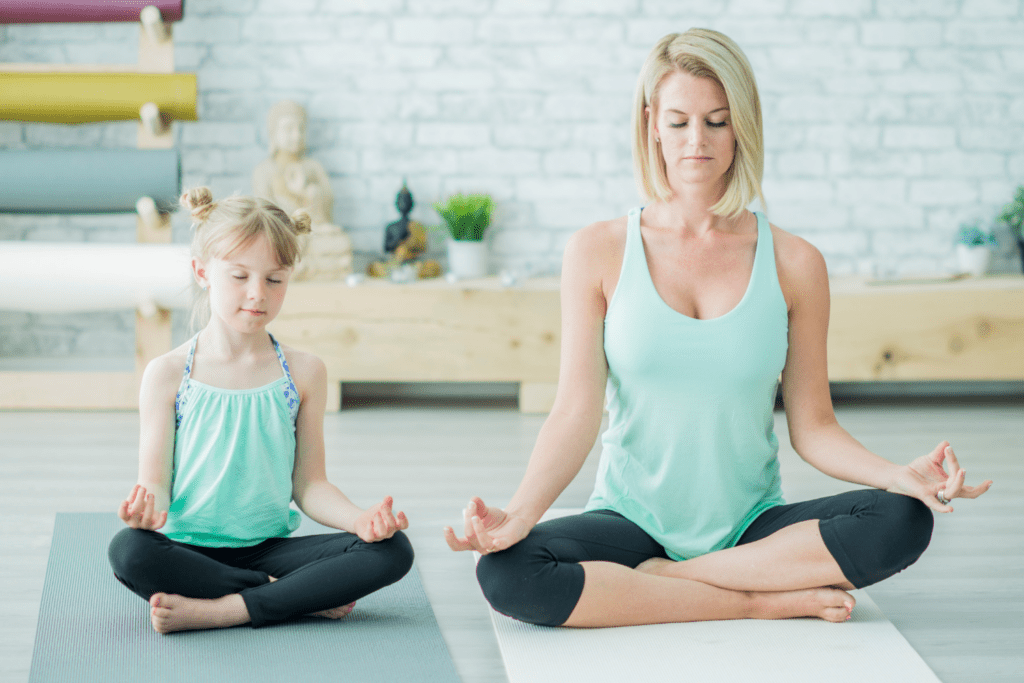
Now, how can we use mindfulness techniques to manage anxiety and stress in the moment?
By practicing mindful breathing during difficult times, we can return to the present and relax ourselves. Getting kids to use these methods is easy.
All it takes is pre-planning and a little role playing.
- Chose a mindfulness calm-down strategy that your child thinks is fun, simple, or engaging
- Teach the technique ahead of time while they are already calm and attentive
- Talk about a few scenarios of big emotions, stress, or anxiety
- Practice the technique together while imagining one of those situations
- Choose a reminder word or helpful signal that your child can see or hear as a prompt to try the strategy… something like “Let’s breathe” or “All puppies have feelings”. This will be different for every child, it’s just a way for you to give them a verbal or visual reminder of the exercise when you see them start to get upset, at least the first few times to help them practice.
- Practice again on a regular basis! Maybe set a specific time of day to get into the routine or habit of mindfulness.
Here are a few simple mindfulness techniques that you can teach your child to use in moments of stress or anxiety.
- Belly Breathes: Place one hand on your stomach and one on your chest. Inhale for four seconds and exhale for four. This can be through your nose or mouth or a combination of both. Notice the rise and fall of your hands as you breathe.
- Blowing Bubbles: Imagine you are blowing bubbles. Remember to breathe softly and long so they can create a bubble. (You can also use bubbles for this)
- Shoulder Roll Breath: This method also releases muscle tension. Sit comfortable and close your eyes. As you inhale, roll your shoulders up to your ears. On the exhale, roll them back down.
- Finger Mantras: This exercise is good for focus and coordination. As you say a mantra, use your thumb to tap each finger softly while repeating the phrase. Once you reach your pinky finger, go the opposite way. You can speed up or slow down as you need, just make sure to tap each finger while saying the mantra.
- 5 Senses: To get kids to be present, have them describe their senses. This technique is used by therapists for people with anxiety and is proven to work.
- 5 things you can see
- 4 things you can feel or touch
- 3 things you can hear
- 2 things you can smell
- 1 thing you can taste
These deep breathing exercises are great ways to teach kids how to calm their worries.
Check out my list of 10+ fun breathing exercises here with a free download!
Learning how to manage and regulate their emotions will serve them well in life, as stress and anxiety is all around us.
Once kids know how to cope with these big feelings in a healthy way, they can use them to soothe their anxiety themselves.
You can still be there for your kiddos by talking with them and validating their emotions, but your kiddos will now know how to calm themselves instead of relying on ineffective and unproductive methods.
Do yourself and your kiddos a great service by learning these awesome and easy methods for managing anxiety!
